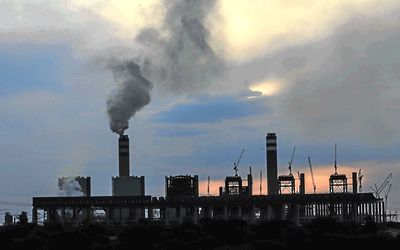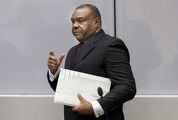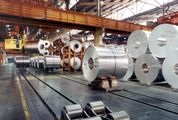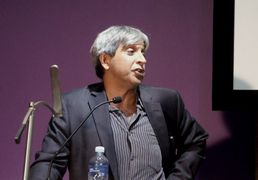SA’s growth and energy may need to be decoupled
by Saliem Fakir and Ellen Davies,
2016-03-08 05:42:00.0
SA FACES a paradoxical challenge. It needs to grow its economy, and it needs energy to achieve this. But, to ensure energy security and achieve the right threshold between power supply-and-demand, there needs to be an understanding of how fast the economy will grow.
The difficulty is that it cannot be predicted with any certainty what the economic growth will be and, therefore, what level of energy supply will be needed to achieve it.
Adding to this complexity is a question about what SA’s economic growth will be based on — energy-intensive industries or continued growth of the services sector? This will be a major determinant of the future energy needs.
Various sources suggest that escalating electricity prices in SA and global economic conditions are putting pressure on energy-intensive companies, such as those in the smelting and steel industries. This also applies to mining companies that, in addition to domestic pressures, are experiencing a continued slump in global demand for commodities.
It seems increasingly likely that economic growth and energy-intensity in SA could be decoupled and SA’s growth will be based predominantly on the services sector and some level of high-value manufacturing. This will have a big effect on energy demand.
Apart from this potential shift at a macrosector level, there are other drivers that may further depress energy demand. The growth in distributed energy close to, or at the source of, demand is gaining traction — be it in the form of solar panels on household rooftops or small plants for industrial purposes.
Unreliable supply, ever increasing electricity tariffs and the falling costs of distributed technologies is incentivising those who can afford it to take up and install alternative energy sources.
Given this uncertainty, the decision to invest in big bulk energy infrastructure projects, such as the proposed nuclear build is ill informed. The problem with such big projects is that they are inflexible and lock the country on a path that may impose serious fiscal and system risks and, ultimately, hamper economic growth.
The Medupi and Kusile experience attests to this. Originally expected to be fully operational by last December, they are unlikely to be complete before 2021.
Conservative estimates place Medupi alone at about R40bn over budget. Apart from construction delays and cost overruns, there are numerous other challenges facing these projects. One big uncertainty is whether Eskom will be able to secure the coal to fuel these plants.
The effect that delays and cost overruns at Medupi and Kusile have had on Eskom’s finances and its ability to secure loans for further infrastructure upgrades, on consumers in the form of tariff increases and on the economy in the form of load shedding and lost production, is immense. SA is now stuck with two projects that continue to be mired in problems, draining scarce resources, and failing to meet energy needs.
Why repeat this mistake with nuclear energy? Even some nuclear proponents warn against investing in such large nuclear plants and in a single technology, because technology advances indicate a shift to smaller, more modular systems.
Nuclear expert Tom Blees cautions policy makers to watch developments and delay construction to after 2019/20 "since there are very promising designs that might be ready in less than five years and could be safer and faster to build, and much less expensive".
The traditional model of centralised production reliant on large coal, gas or nuclear power stations distributed to consumers through extensive grid networks is being challenged. Countries are seeking to balance big systems with smaller, more modular generation plants that are easier to finance, carry less risk and are more flexible in tackling fluctuating energy demand.
The National Development Plan (NDP) favours this approach. In some regards, the government is abreast of these developments. The Renewable Energy Independent Power Producers Procurement Programme has showcased the potential of procuring smaller modular units, at the cheapest cost, with fast turnaround periods, in a transparent process that allows flexibility in attending to energy needs. This programme is being replicated with coal and gas.
When examining energy planning and the economic implications of energy choices, these questions need to be considered from a systems perspective. The debate around the government’s plan to procure 9,600MW of nuclear power has focused predominantly on the cost of generation. But this narrow focus ignores the more important question: how does an investment on this scale affect SA’s electricity system as a whole, and how does the electricity system affect the economy as a whole?
Medupi and Kusile are red flags. Will SA be stuck with a technology that is inflexible, cumbersome, and capital-intensive in a world where the energy-production and systems-management model has changed?
Considering Medupi and Kusile, the global trends in energy-production, and the uncertainty regarding SA’s future economic growth, it seems that now, more than ever, the NDP’s warning that "poor investment decisions commandeer the state’s financial resources and hinder other important investments, ultimately constraining economic growth" should be heeded.
• Fakir is head, and Davies a researcher, at the World Wide Fund for Nature SA’s future and policies unit

The problem with big bulk energy infrastructure projects is that they are inflexible and lock the country on a path that could impose serious system and fiscal risks and hamper economic growth, the writer argues. Picture: SUNDAY TIMES
SA FACES a paradoxical challenge. It needs to grow its economy, and it needs energy to achieve this. But, to ensure energy security and achieve the right threshold between power supply-and-demand, there needs to be an understanding of how fast the economy will grow.
The difficulty is that it cannot be predicted with any certainty what the economic growth will be and, therefore, what level of energy supply will be needed to achieve it.
Adding to this complexity is a question about what SA’s economic growth will be based on — energy-intensive industries or continued growth of the services sector? This will be a major determinant of the future energy needs.
Various sources suggest that escalating electricity prices in SA and global economic conditions are putting pressure on energy-intensive companies, such as those in the smelting and steel industries. This also applies to mining companies that, in addition to domestic pressures, are experiencing a continued slump in global demand for commodities.
It seems increasingly likely that economic growth and energy-intensity in SA could be decoupled and SA’s growth will be based predominantly on the services sector and some level of high-value manufacturing. This will have a big effect on energy demand.
Apart from this potential shift at a macrosector level, there are other drivers that may further depress energy demand. The growth in distributed energy close to, or at the source of, demand is gaining traction — be it in the form of solar panels on household rooftops or small plants for industrial purposes.
Unreliable supply, ever increasing electricity tariffs and the falling costs of distributed technologies is incentivising those who can afford it to take up and install alternative energy sources.
Given this uncertainty, the decision to invest in big bulk energy infrastructure projects, such as the proposed nuclear build is ill informed. The problem with such big projects is that they are inflexible and lock the country on a path that may impose serious fiscal and system risks and, ultimately, hamper economic growth.
The Medupi and Kusile experience attests to this. Originally expected to be fully operational by last December, they are unlikely to be complete before 2021.
Conservative estimates place Medupi alone at about R40bn over budget. Apart from construction delays and cost overruns, there are numerous other challenges facing these projects. One big uncertainty is whether Eskom will be able to secure the coal to fuel these plants.
The effect that delays and cost overruns at Medupi and Kusile have had on Eskom’s finances and its ability to secure loans for further infrastructure upgrades, on consumers in the form of tariff increases and on the economy in the form of load shedding and lost production, is immense. SA is now stuck with two projects that continue to be mired in problems, draining scarce resources, and failing to meet energy needs.
Why repeat this mistake with nuclear energy? Even some nuclear proponents warn against investing in such large nuclear plants and in a single technology, because technology advances indicate a shift to smaller, more modular systems.
Nuclear expert Tom Blees cautions policy makers to watch developments and delay construction to after 2019/20 "since there are very promising designs that might be ready in less than five years and could be safer and faster to build, and much less expensive".
The traditional model of centralised production reliant on large coal, gas or nuclear power stations distributed to consumers through extensive grid networks is being challenged. Countries are seeking to balance big systems with smaller, more modular generation plants that are easier to finance, carry less risk and are more flexible in tackling fluctuating energy demand.
The National Development Plan (NDP) favours this approach. In some regards, the government is abreast of these developments. The Renewable Energy Independent Power Producers Procurement Programme has showcased the potential of procuring smaller modular units, at the cheapest cost, with fast turnaround periods, in a transparent process that allows flexibility in attending to energy needs. This programme is being replicated with coal and gas.
When examining energy planning and the economic implications of energy choices, these questions need to be considered from a systems perspective. The debate around the government’s plan to procure 9,600MW of nuclear power has focused predominantly on the cost of generation. But this narrow focus ignores the more important question: how does an investment on this scale affect SA’s electricity system as a whole, and how does the electricity system affect the economy as a whole?
Medupi and Kusile are red flags. Will SA be stuck with a technology that is inflexible, cumbersome, and capital-intensive in a world where the energy-production and systems-management model has changed?
Considering Medupi and Kusile, the global trends in energy-production, and the uncertainty regarding SA’s future economic growth, it seems that now, more than ever, the NDP’s warning that "poor investment decisions commandeer the state’s financial resources and hinder other important investments, ultimately constraining economic growth" should be heeded.
• Fakir is head, and Davies a researcher, at the World Wide Fund for Nature SA’s future and policies unit























Change: 1.19%
Change: 1.36%
Change: 2.19%
Change: 1.49%
Change: -0.77%
Data supplied by Profile Data
Change: -0.08%
Change: 0.12%
Change: 1.19%
Change: 0.00%
Change: 0.10%
Data supplied by Profile Data
Change: 0.32%
Change: 0.43%
Change: 0.41%
Change: 0.22%
Change: 0.58%
Data supplied by Profile Data
Change: 0.12%
Change: -0.41%
Change: 0.00%
Change: -0.33%
Change: 0.10%
Data supplied by Profile Data